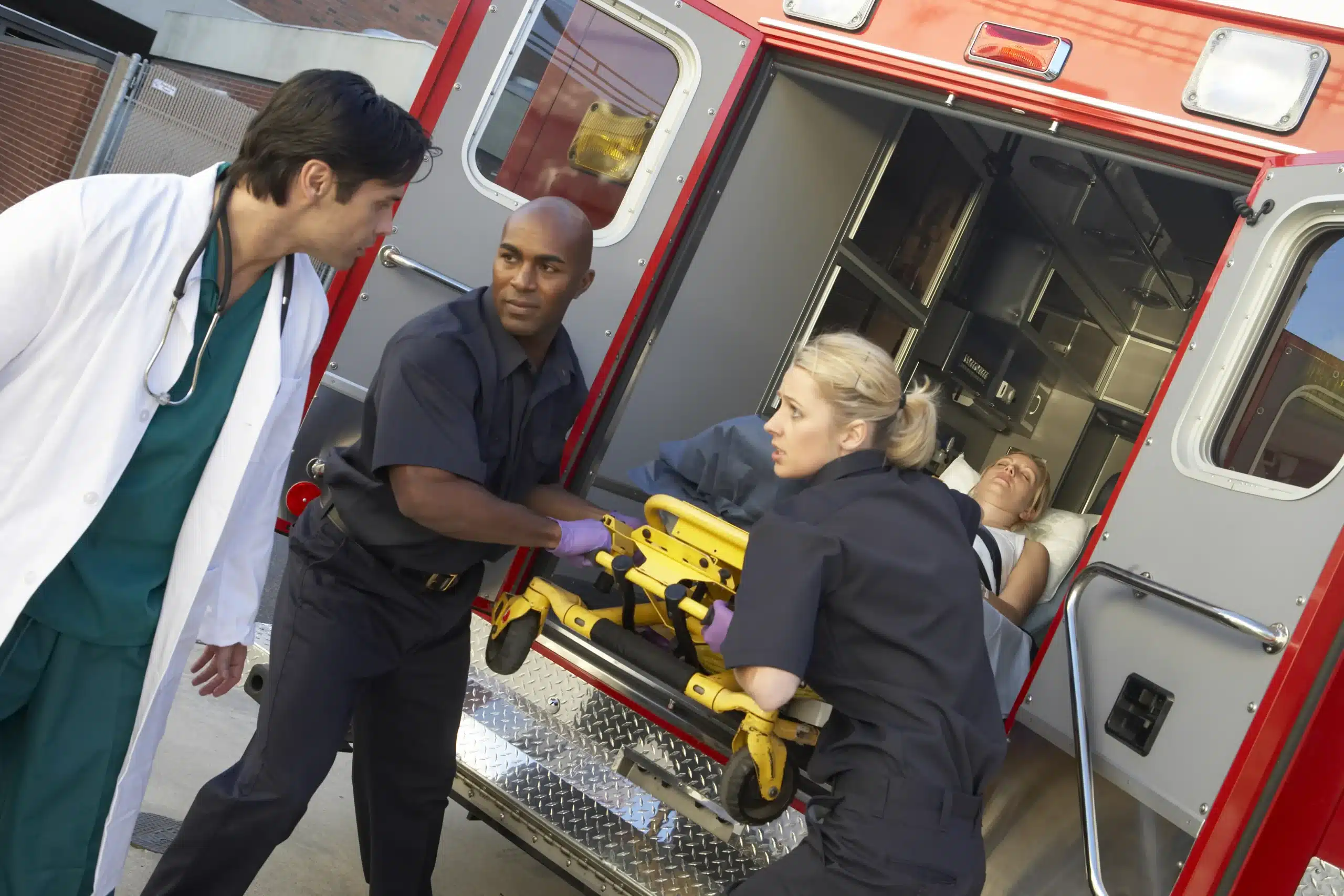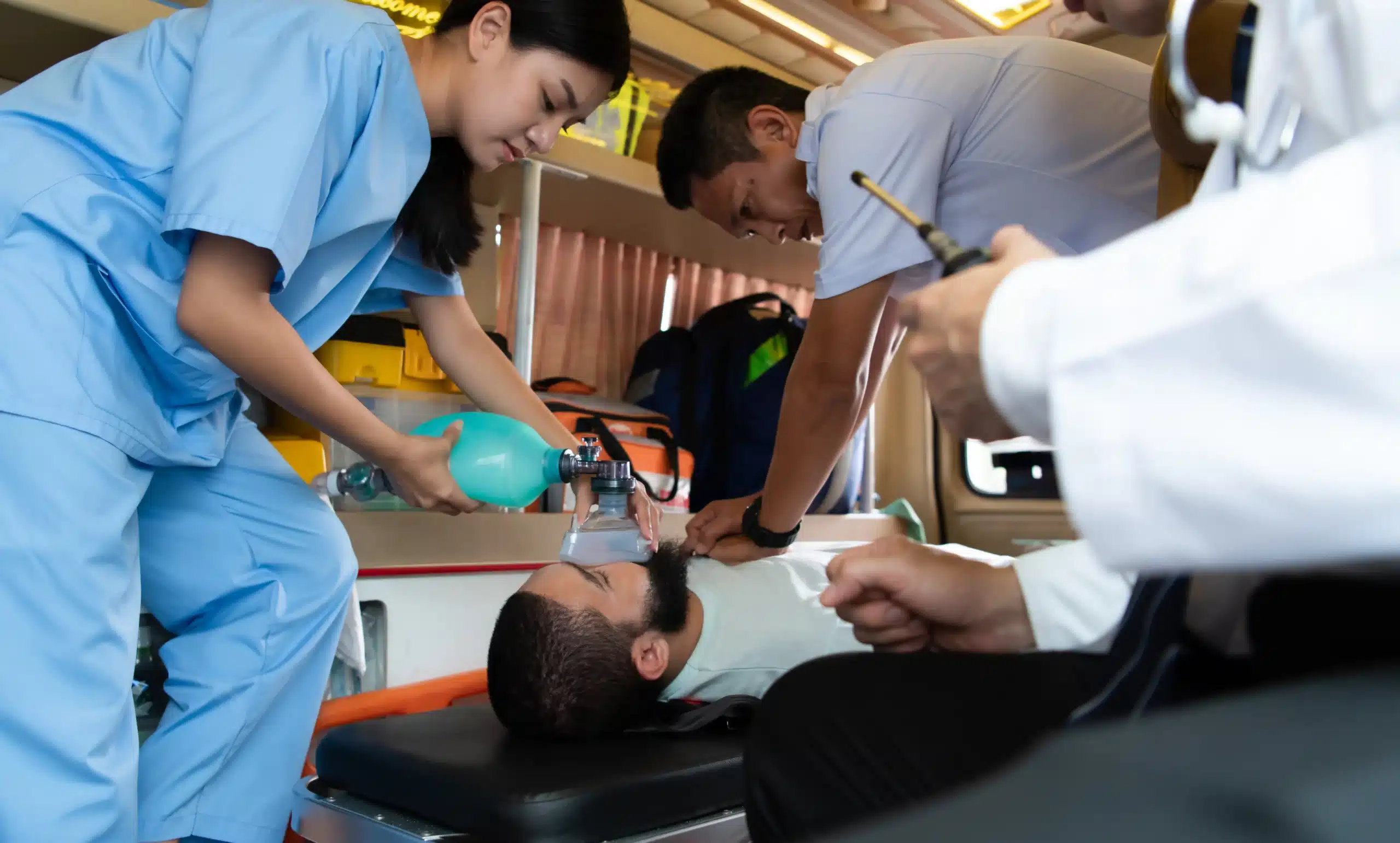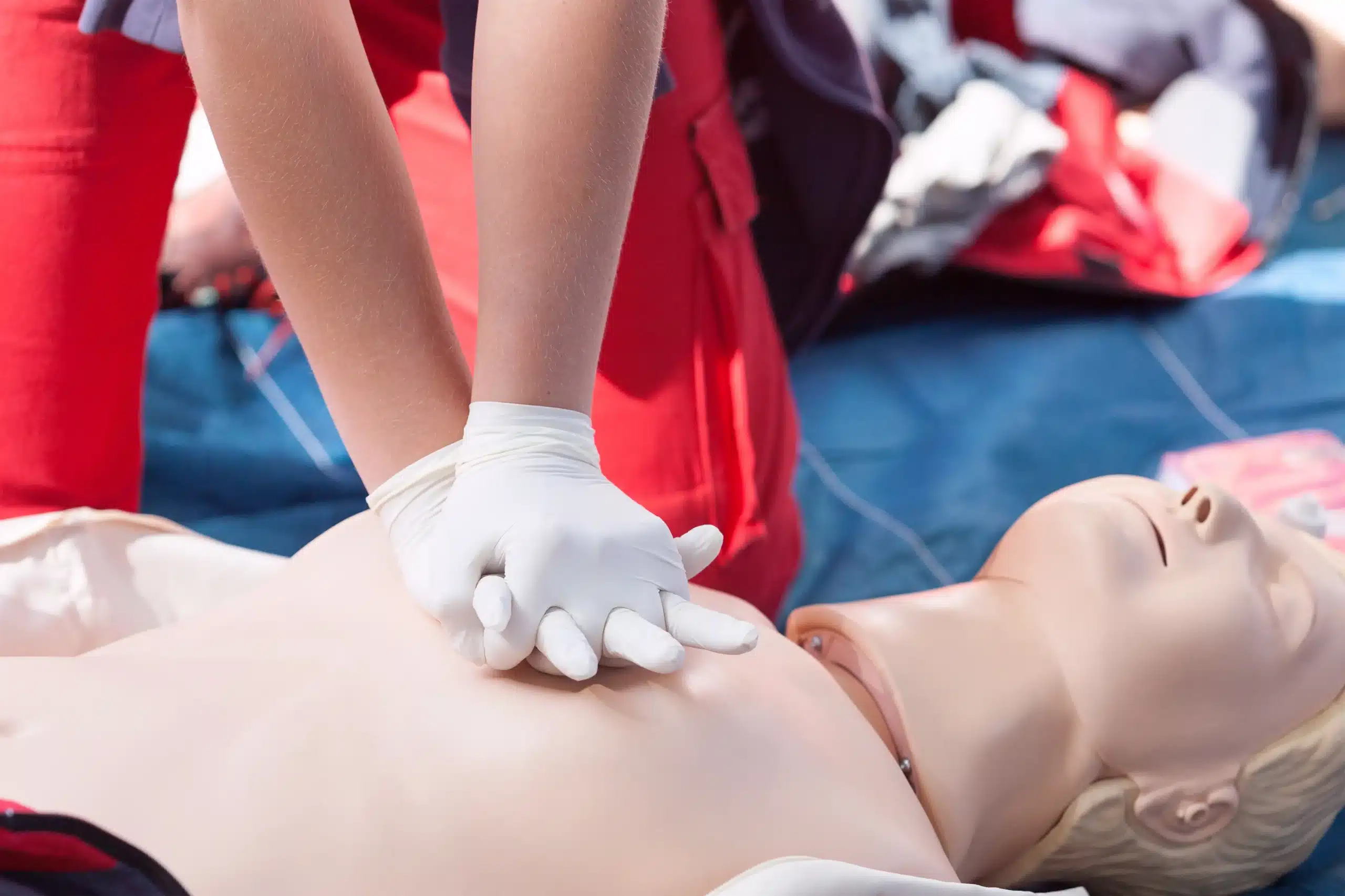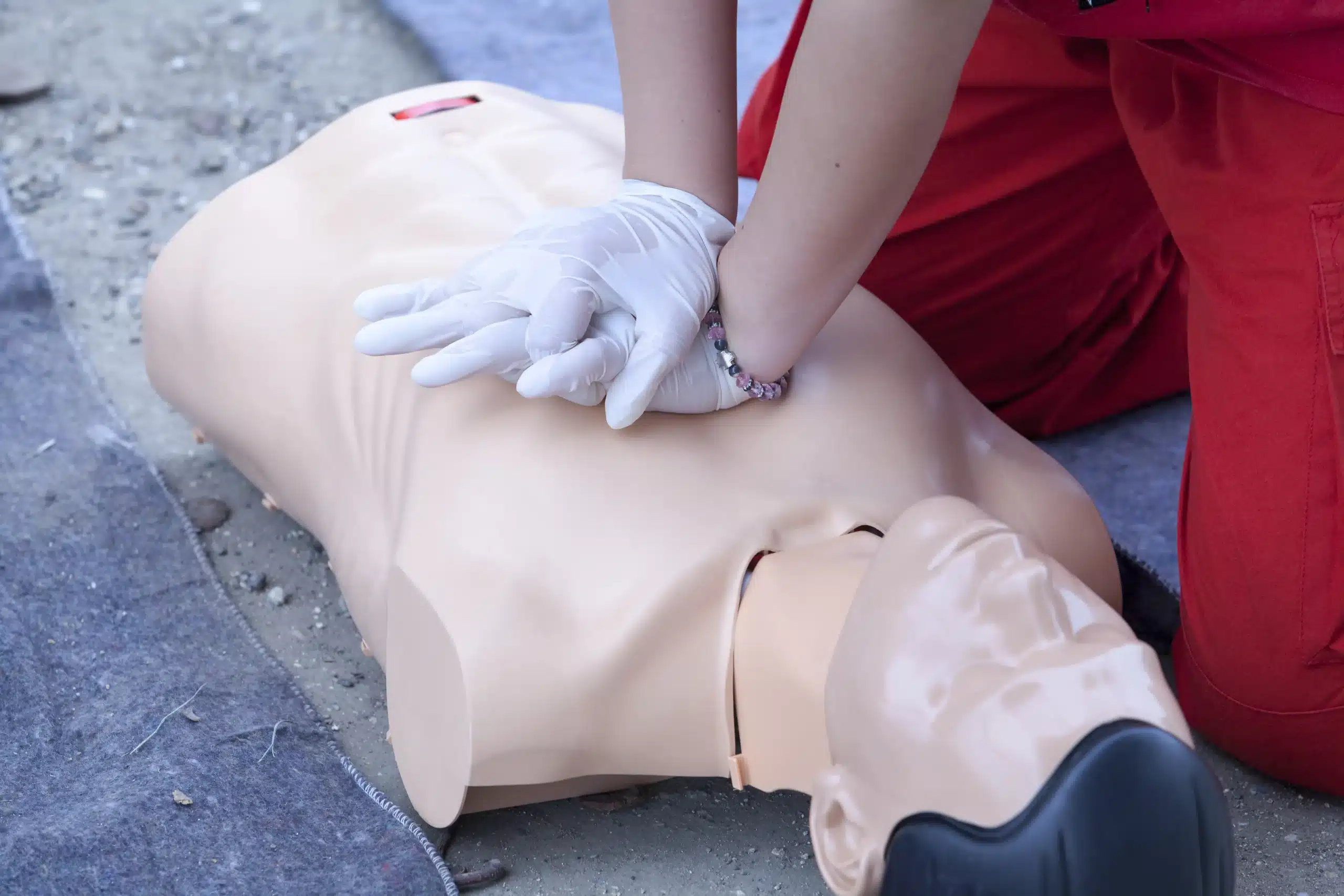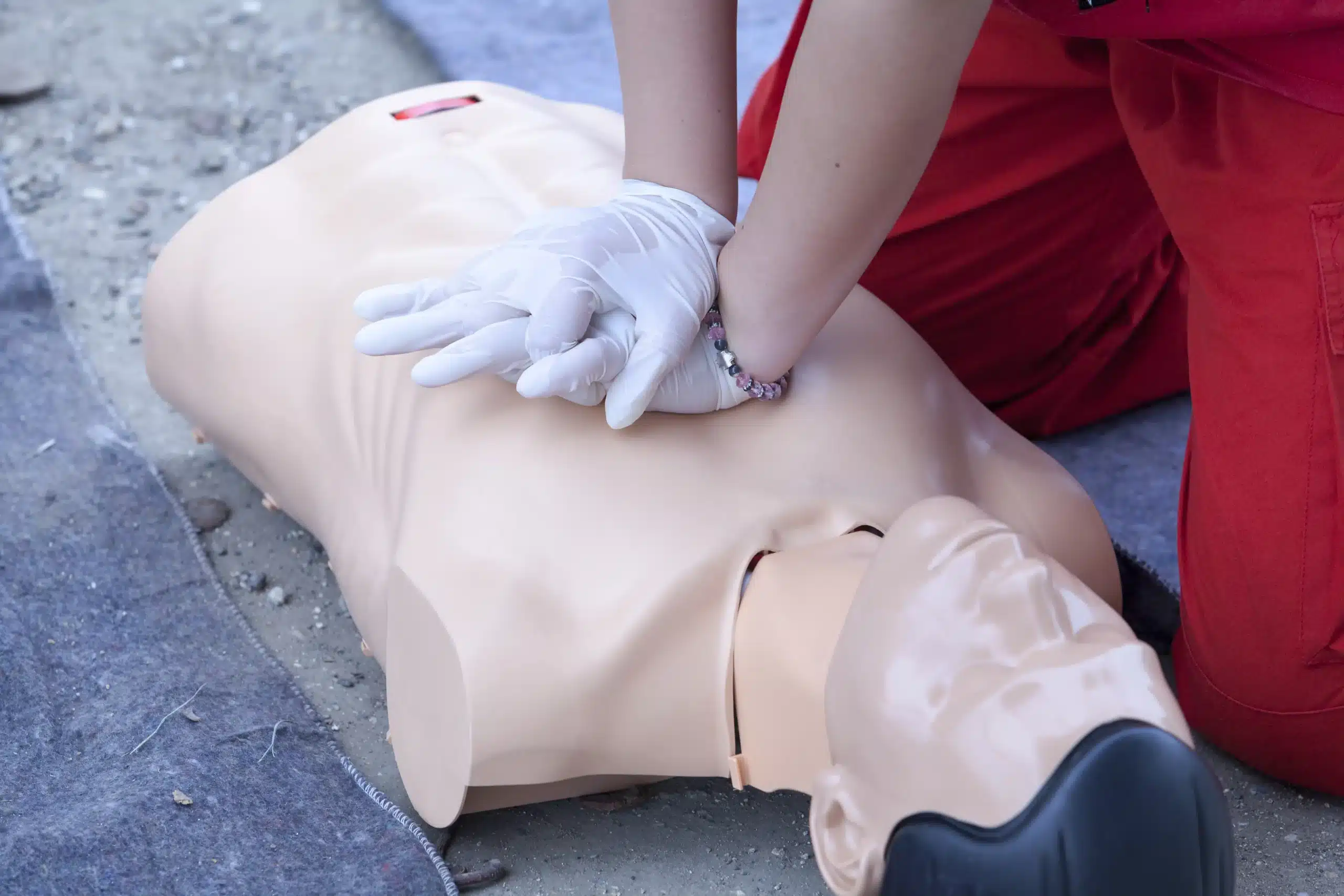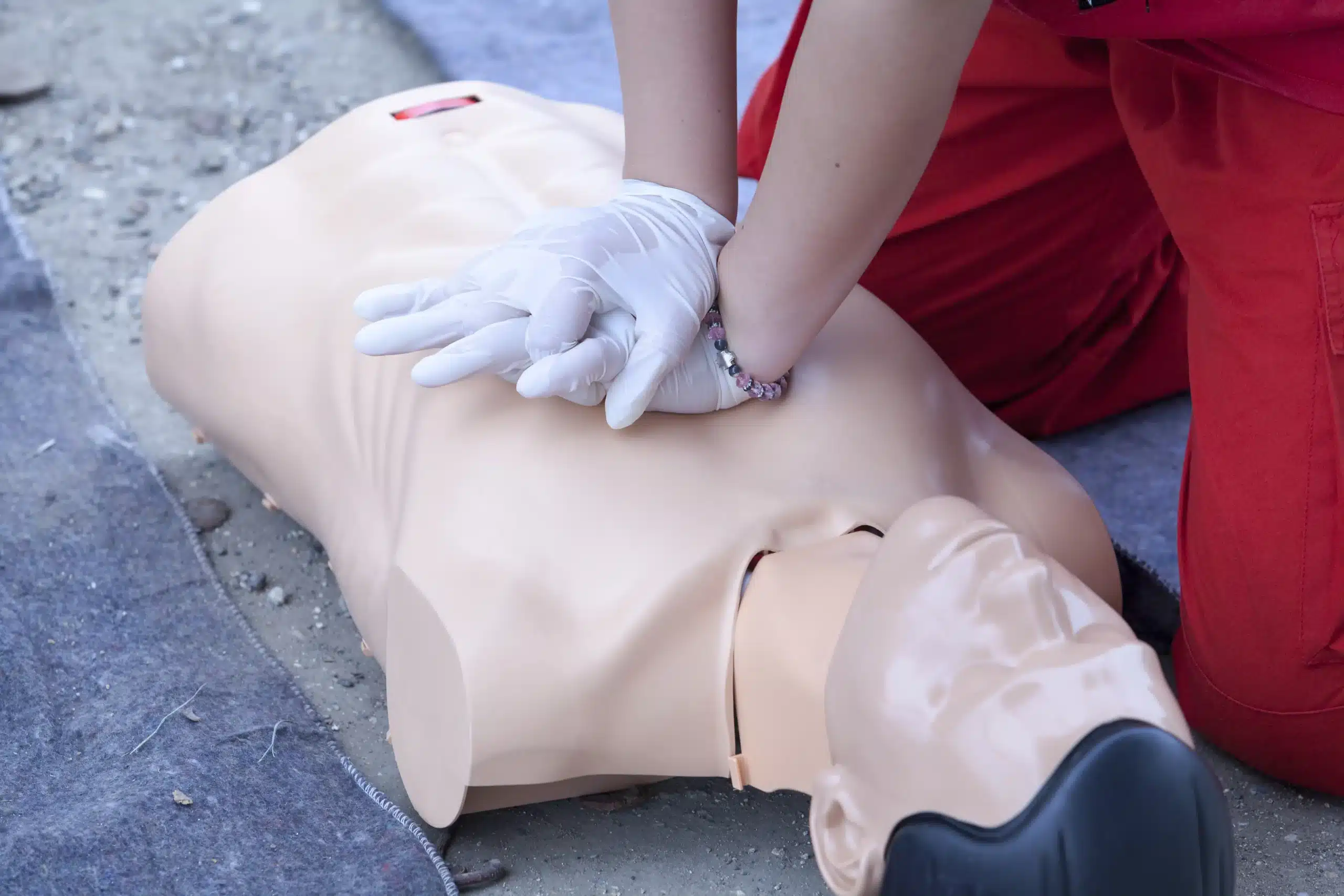Seconds matter in a medical emergency. As a healthcare provider in Citrus Heights, you know this firsthand. Having current BLS certification—Basic Life Support training for healthcare providers in Citrus Heights—is more than just a requirement; it’s a responsibility. It’s about having the confidence and competence to act quickly and effectively when a patient’s life is on the line. This article will break down everything you need to know about BLS certification in Citrus Heights, including where to find training, different course formats, cost considerations, and how BLS directly impacts patient outcomes. We’ll also explore how ongoing training and staying updated with the latest guidelines can empower you to provide the best possible care.
Key Takeaways
- BLS skills are essential for healthcare professionals: From recognizing emergencies to performing CPR and using an AED, BLS training equips you with the tools to make a real difference in critical situations. Choose a course that fits your schedule and learning style, whether in-person, online, or blended.
- Hands-on practice builds confidence: Don’t just learn the steps—master them. Look for training that emphasizes practical experience, including simulated emergencies, to solidify your skills and prepare you for real-world scenarios. This hands-on approach is key to developing the muscle memory and confidence needed to act decisively when it matters most.
- Stay current to provide the best care: Maintaining your BLS certification isn’t just a requirement—it’s a commitment to your patients. Regularly renew your certification and pursue continuing education opportunities to stay up-to-date with the latest guidelines and best practices. This ongoing learning ensures you’re always equipped to provide the highest quality of care.
What is BLS for Healthcare Providers?
BLS, or Basic Life Support, certification gives healthcare providers the skills to respond to life-threatening emergencies. From recognizing respiratory distress to performing CPR, BLS-certified professionals play a vital role in improving patient outcomes. This training covers essential techniques and emphasizes the importance of teamwork in medical emergencies. It’s a cornerstone of emergency medical care, bridging the gap until more advanced medical help arrives.
What is BLS and why is it important?
BLS certification is crucial for anyone in healthcare. It equips professionals with the skills to manage cardiac arrest, respiratory issues, and airway obstructions. These skills are essential for various healthcare settings, from hospitals and clinics to ambulances and private practices. BLS training emphasizes early intervention and high-quality CPR, both linked to increased survival rates. The training covers recognizing emergencies, performing chest compressions, giving rescue breaths, and using an AED. It also stresses the importance of teamwork and clear communication during critical situations. This preparation helps healthcare providers deliver prompt and effective care, ultimately increasing a patient’s chance of survival. For more insights, read about the importance of BLS training for healthcare professionals.
Essential BLS Skills
BLS certification covers a range of life-saving skills. You’ll learn how to perform high-quality CPR for adults, children, and infants. The training also covers using an automated external defibrillator (AED) and how to relieve choking. Beyond these core skills, BLS certification emphasizes effective teamwork and communication, crucial for coordinating care in emergencies. A comprehensive guide to BLS classes offers more detail on these essential skills.
How BLS Improves Patient Outcomes
Immediate, high-quality BLS is critical for improving patient outcomes. Studies show that adhering to evidence-based BLS guidelines leads to better survival rates after cardiac arrest. Effective BLS can minimize the time between the onset of an emergency and the start of life-saving interventions. This quick response can significantly impact a patient’s chances of recovery. The American Heart Association offers guidance for healthcare providers on the importance of BLS. BLS training empowers healthcare professionals to confidently respond to emergencies, ultimately leading to better patient care and improved survival rates.
Find BLS Training in Citrus Heights
If you’re a healthcare provider in Citrus Heights and need BLS training, you have several excellent options. Here’s a breakdown of some top choices:
Folsom CPR Classes
Folsom CPR Classes offers convenient, high-quality BLS certification through the American Heart Association. Located in nearby Folsom, their proximity makes them a practical choice for anyone working in Citrus Heights. They also offer a blended learning option called HeartCode BLS, which combines online coursework with in-person skills sessions—a flexible option for busy professionals.
Safety Training Seminars
Safety Training Seminars provides a range of American Heart Association courses, including BLS for healthcare providers in Citrus Heights. They also offer ACLS and PALS certification, making them a convenient option for completing multiple certifications. Their focus on healthcare professionals ensures the training aligns with current guidelines.
Citrus Heights CPR Classes
Citrus Heights CPR Classes emphasizes community preparedness through their AHA BLS CPR training. They foster a collaborative learning environment for healthcare professionals, first responders, and community members. This focus on local impact may appeal to those invested in improving community healthcare.
Bay Area CPR
Bay Area CPR (through Safety Training Seminars) offers AHA BLS certification in and around Citrus Heights. With daily classes across Northern California, they provide accessible training for those with busy schedules. Their broad reach makes it easier to find a class time and location that works for you.
BLS Course Formats & Schedules
Finding the right BLS course format and schedule is key to successfully balancing your training with your other commitments. Thankfully, several options are available to fit various needs and preferences.
In-Person BLS Training
In-person BLS training remains a popular choice, especially for those who value hands-on learning and immediate feedback. This format offers personalized instruction, which many healthcare providers find beneficial. Providers like Safety Training Seminars offer American Heart Association (AHA) BLS courses in Citrus Heights, providing the hands-on experience crucial for mastering these life-saving techniques. The direct interaction with instructors and peers creates a supportive learning environment where you can ask questions and practice your skills in real-time.
Online BLS Certification
Online learning has made BLS certification more accessible than ever. The AHA’s RQI (Resuscitation Quality Improvement) program offers a modern and efficient path to obtaining your official BLS certification card. This online option allows healthcare professionals in Citrus Heights to complete the cognitive portion of the course at their own pace, fitting training around their busy schedules. This flexibility is particularly helpful for those juggling work, family, and other obligations.
Hybrid BLS Courses
Combining the best of both worlds, hybrid BLS courses offer a blended learning experience. Folsom CPR Classes offers the HeartCode BLS blended learning course, allowing you to complete the cognitive portion online at your convenience. You then attend an in-person skills session to demonstrate your proficiency. This approach provides the flexibility of online learning combined with the essential practical experience of in-person training.
Flexible Scheduling Options
Recognizing the demanding schedules of healthcare professionals, many training centers prioritize offering flexible scheduling. Folsom CPR Classes provides convenient, high-quality training with flexible schedules and competitive pricing for both individuals and groups. This makes it easier for healthcare providers in Citrus Heights to find a course that seamlessly integrates with their busy lives. Whether you prefer weekday evenings, weekends, or daytime sessions, you’re likely to find a time that works for you.
Compare BLS Costs & Value
When choosing a BLS certification course, cost is naturally a factor. Understanding the typical price range and available discounts helps you make an informed decision. It’s also important to weigh the cost against the immense value BLS training provides.
Typical BLS Certification Costs
BLS certification costs in Sacramento can vary. Basic BLS training, including same-day certification cards, can start around $59.95 at providers like CPR Classes Sacramento. More comprehensive programs, which often include hands-on skills practice and cover CPR and AED training approved by the American Heart Association, typically cost around $110. Folsom CPR Classes offers competitive pricing and a low-price guarantee, ensuring you receive high-quality BLS training at a fair price.
Discounts & Group Rates
Many training centers offer discounts to make BLS certification more accessible. Folsom CPR Classes provides group discounts, making it a cost-effective choice for workplaces or groups of friends certifying together. They also have student discounts available. Check with your chosen provider for any applicable discounts and explore options like recertification courses, which can sometimes be more affordable than initial certification.
Is BLS Training Worth the Cost?
While cost is a consideration, the value of BLS training is undeniable. This training equips healthcare providers with essential life-saving skills, directly impacting patient outcomes and survival rates. The American Heart Association emphasizes the critical role of high-quality BLS in the chain of survival. Investing in BLS training is not just about obtaining certification; it’s about gaining the confidence and competence to respond effectively in emergencies. Consider it an investment in your career, your community, and the well-being of those around you.
Choose the Right BLS Provider
Finding the right BLS training provider is crucial for healthcare professionals. It’s an investment in your skills and, ultimately, your patients’ well-being. Here’s what to consider:
Choosing a BLS Course
Not all BLS courses are the same. Look for a course aligned with the latest American Heart Association guidelines. Safety Training Seminars offers AHA-compliant BLS training in Citrus Heights, ensuring your instruction is current. Consider factors like class size, schedule, and format (in-person, online, or blended) to find what works for you. A good provider will offer a variety of options.
Why AHA Certification Matters
Earning your American Heart Association certification is essential for healthcare providers. AHA certification is widely recognized and respected, signifying you’ve completed a rigorous training program and possess the skills to perform BLS effectively. This can enhance your professional credibility and may be a requirement for some healthcare jobs.
What Makes Local Providers Unique?
Local BLS providers often offer distinct advantages. They understand community needs and can tailor training accordingly. Providers in Citrus Heights may offer more flexible scheduling and smaller class sizes, allowing for more personalized instruction. This focused approach can create a more effective learning experience.
Instructor Expertise
The instructor’s experience and qualifications significantly impact your BLS training. Experienced AHA instructors bring real-world knowledge to the classroom. Look for instructors passionate about teaching and dedicated to helping students master these essential skills. A knowledgeable and engaging instructor can make all the difference.
Register for BLS Training
Enroll in a BLS Class
Finding the right BLS class is the first step. Several organizations offer training in and around Citrus Heights. Folsom CPR Classes, for example, offers a range of American Heart Association courses, including BLS certification. You can explore other options near Citrus Heights through providers like Bay Area CPR, which also lists BLS courses in the area. Many providers offer convenient online registration, making it easy to find a class that fits your schedule.
Requirements for Healthcare Providers
BLS certification is often a prerequisite for healthcare professionals and students in Citrus Heights. In Home CPR notes that BLS is the required CPR certification for those working or studying in healthcare. Check with your employer or educational institution to confirm their specific requirements.
What to Expect During Training
BLS training provides healthcare providers with essential skills for responding to medical emergencies. Online Safety Trainer emphasizes how BLS equips providers to deliver care in diverse settings, ultimately improving patient outcomes. During training, expect to learn techniques like CPR, using an AED, and relieving choking. Citrus Heights CPR Classes highlights the American Heart Association’s RQI program as a popular way to get BLS certified. This program often incorporates hands-on practice and skills assessments.
Hands-On BLS Training
Hands-on training is the cornerstone of effective BLS certification. It’s where you translate textbook knowledge into real-world skills, building the muscle memory and confidence to act decisively in emergencies.
The Importance of Practical Experience
BLS isn’t just about memorizing steps; it’s about mastering techniques that can save a life. Hands-on training bridges the gap between theory and practice, allowing you to perform chest compressions, practice ventilation techniques, and learn how to use an AED—all under the guidance of a certified instructor. This practical application solidifies your understanding and helps you develop the crucial skills needed to respond effectively during cardiac arrest and other emergencies. For healthcare providers, this translates to improved patient outcomes and increased survival rates. At Folsom CPR Classes, we emphasize this hands-on approach to ensure our students gain the confidence and competence they need.
Simulated Emergencies
Simulated emergencies are a key component of hands-on BLS training at Folsom CPR Classes. These scenarios mimic real-life crises, allowing you to apply your skills in a controlled environment. Working through these simulations builds your critical thinking skills, improves your reaction time, and prepares you for the stress of actual emergencies. The American Heart Association’s RQI program, offered by Folsom CPR Classes, uses these simulations to reinforce learning and ensure competency. This approach helps healthcare professionals in Citrus Heights, Sacramento, and surrounding areas maintain their skills and stay current with the latest BLS guidelines.
Build Confidence in Life-Saving Skills
Confidence is essential in emergency situations. Hands-on BLS training empowers you with the skills and knowledge to take charge when seconds count. Repeated practice and expert guidance during these BLS CPR classes foster a sense of competence and self-assurance. This confidence translates to decisive action, effective teamwork, and ultimately, better patient care. For residents of Folsom, Citrus Heights, and Sacramento, Folsom CPR Classes provides the training and support needed to build confidence in life-saving skills.
Maintain Your BLS Certification
As a healthcare provider, maintaining your BLS certification isn’t just a checkbox—it’s a commitment to providing the highest quality of care. Staying current with the latest guidelines and techniques can significantly impact patient outcomes, giving you the confidence to act quickly and effectively in critical situations.
Renew Your Certification
BLS certification is typically valid for two years. Knowing your renewal date and planning ahead is key to avoiding a lapse in your credentials. In Citrus Heights, various providers offer renewal courses, with prices starting around $59.95 for basic BLS training. More comprehensive programs, including CPR and AED training approved by the American Heart Association, are also available. Remember, maintaining a current certification is essential for professional practice.
Continuing Education
Beyond renewing your certification, ongoing learning is crucial. Regular training reinforces essential skills and keeps you informed about evolving best practices in emergency medical care. This commitment to continuing education demonstrates your dedication to providing optimal patient care. The American Heart Association offers resources and guidelines to support healthcare providers in their ongoing learning.
Stay Up-to-Date with BLS Guidelines
Medical advancements and research lead to periodic updates in BLS guidelines. Staying informed about these changes ensures you’re always prepared to deliver the most effective care. Subscribing to relevant publications or following reputable organizations like the American Heart Association can help you stay current on the latest recommendations for high-quality BLS. This proactive approach ensures you’re always equipped with the knowledge and skills to make a real difference in emergency situations. Staying informed demonstrates your commitment to best practices and patient well-being.
BLS Training’s Impact on Healthcare
BLS training is a cornerstone of effective healthcare, influencing everything from individual patient care to the overall preparedness of our community. Let’s take a closer look at how BLS training makes a difference.
Better Patient Outcomes
High-quality BLS is critical for positive patient outcomes, especially during cardiac emergencies. When healthcare providers have the right training, they can respond swiftly and efficiently, potentially lessening the severity of an incident. The American Heart Association emphasizes that adhering to evidence-based BLS guidelines is directly linked to better patient outcomes. This means that consistent, up-to-date BLS training can significantly impact a patient’s chances of survival. BLS equips healthcare providers with the skills to provide crucial emergency medical care in diverse settings, ultimately improving patient outcomes and survival rates.
Community Preparedness
BLS training creates a ripple effect, extending beyond individual patients to strengthen the entire community. When more people, including healthcare professionals, first responders, and community members, learn BLS, the community’s overall preparedness for emergencies grows. This creates a network of trained individuals ready to step in when needed. This shared knowledge fosters a culture of support and responsibility, empowering individuals to assist during crises. The increasing awareness of the importance of CPR and first-aid training highlights the vital role BLS plays in community preparedness.
Professional Development
For healthcare providers, BLS training is a vital aspect of professional development. It provides a foundation for delivering excellent care and demonstrates a commitment to patient well-being. Regular training and recertification help healthcare providers stay informed about the latest techniques and guidelines in emergency medical care. This continuous learning is essential for maintaining proficiency and adapting to new advancements in the field. BLS certification also benefits the community by increasing the number of qualified individuals ready to respond to emergencies. By investing in BLS training, healthcare professionals refine their skills, contribute to a safer community, and demonstrate their dedication to providing the best possible patient care.
Overcome BLS Training Challenges
Juggling work, family, and other commitments can make finding time for BLS training tricky. But with a little planning, it’s manageable. Many providers offer weekend and evening classes, allowing you to fit training around your busy schedule. Safety Training Seminars, for example, offers convenient CPR courses in and around Citrus Heights.
Balance Work & Training
Look for providers who understand the demands of a healthcare career and offer flexible scheduling. This might include weekend courses, evening sessions, or blended learning options that combine online modules with in-person skills practice. Finding a course that meshes with your availability takes the stress out of scheduling. Consider discussing training options with your employer. Some employers may cover training time or even bring training sessions on-site.
Address Cost Concerns
While BLS training is an investment in your career and patient care, the cost can sometimes feel like a hurdle. Thankfully, there are ways to make it more affordable. Look for providers like Folsom CPR Classes that offer discounts, group rates, or payment plans. Recertification courses are typically less expensive than initial certification and a great way to keep your skills current.
Get Quality, Recognized Certification
Not all BLS certifications are created equal. For healthcare providers, certification from a reputable organization like the American Heart Association (AHA) is essential. The AHA’s RQI program is a popular option for medical professionals seeking efficient, high-quality BLS certification. Choosing an AHA-certified course ensures your training meets the highest standards and is widely accepted in the healthcare field. This recognition can enhance your professional credentials and give you confidence in your skills.
Related Articles
- BLS for Healthcare Providers in Folsom: Your Guide – Folsom CPR Classes
- HeartCode BLS Sacramento: Your Certification Guide – Folsom CPR Classes
- ACLS Courses in Citrus Heights: Find the Right One for You – Folsom CPR Classes
- Find BLS Classes in Sacramento: Your Complete Guide – Folsom CPR Classes
- Why CPR is Important in Healthcare? – Folsom CPR Classes
Frequently Asked Questions
Why is BLS certification important for healthcare providers? It’s the foundation of life-saving care. BLS equips you with the skills to respond effectively to cardiac arrest and other emergencies, directly impacting patient survival. It’s also often a job requirement in healthcare settings.
What key skills will I learn in a BLS course? You’ll learn high-quality CPR for adults, children, and infants, how to use an AED, and techniques for relieving choking. The training also emphasizes teamwork and clear communication during emergencies.
What BLS training options are available for busy professionals? Several formats cater to busy schedules. In-person classes offer hands-on learning, while online and blended learning options provide flexibility for completing the coursework at your own pace. Many providers also offer weekend and evening classes.
How much does BLS certification typically cost, and are discounts available? Costs vary, but basic BLS certification can start around $60. More comprehensive programs may cost around $110. Many providers offer discounts for groups, students, and recertifications. It’s always a good idea to check with the specific training center for their pricing.
How can I find a reputable BLS training provider in my area? Look for providers offering American Heart Association-certified courses. This ensures the training aligns with the latest guidelines. Consider factors like instructor experience, class size, schedule flexibility, and available formats to find the best fit for your needs. Reading reviews and asking for recommendations from colleagues can also be helpful.
